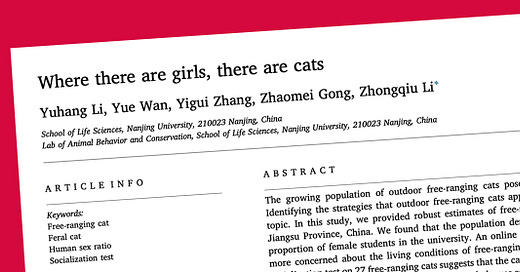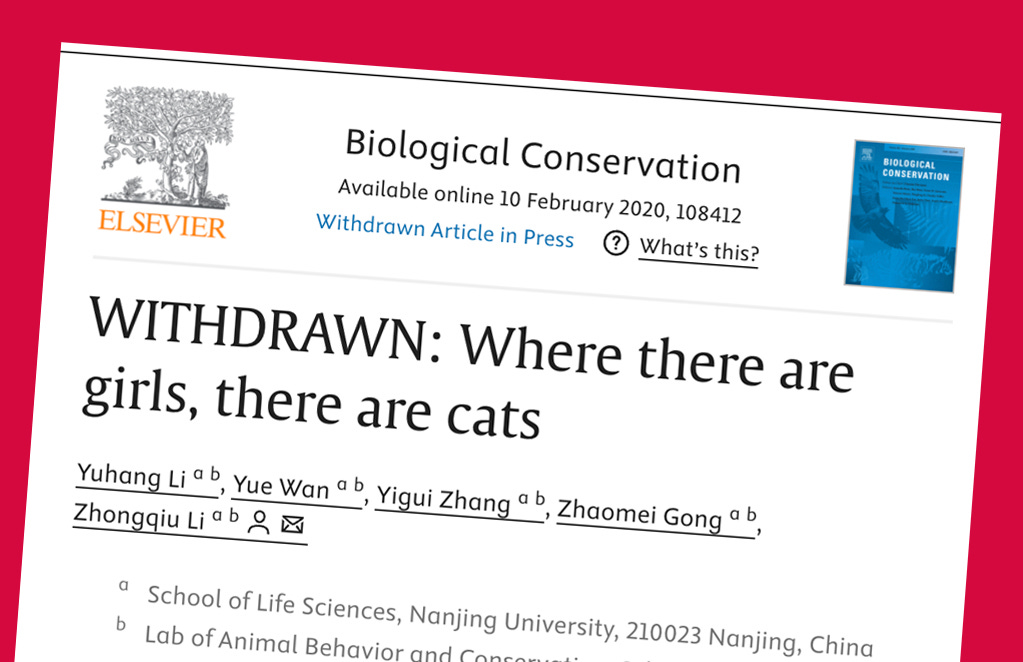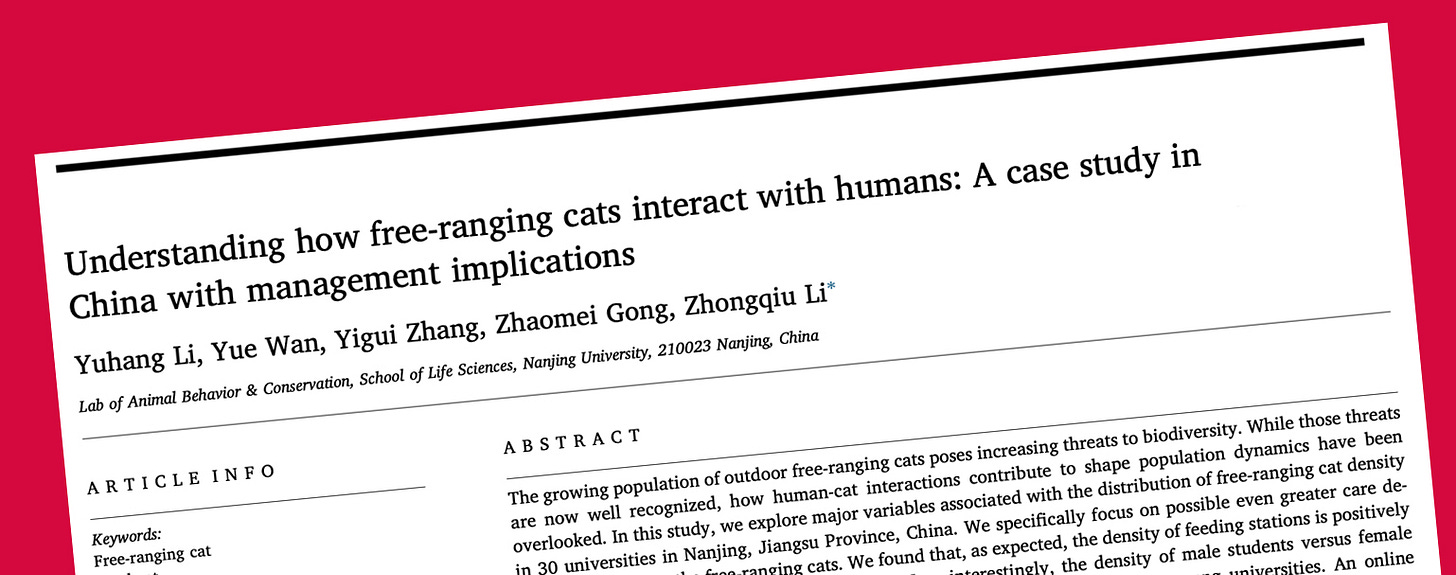"Where There Are Girls, There Are Cats" [research study]
Insights gleaned from studying cats
Cats and girls can get into trouble in unexpected ways. Here is a study that inspired the worlds of science and publishing to get roiled in one of those ways:
"Where There Are Girls, There Are Cats," Yuhang Li, Yue Wan, Yigui Zhang, Zhaomei Gong, and Zhongqiu Li, Biological Conservation, vol. 5, 2020. (Thanks to Tom Gill for bringing this to our attention.)
The authors, at Nanjing University, China, explain:
In this study, we provided robust estimates of free-ranging cat density in 30 universities in Nanjing, Jiangsu Province, China. We found that the population density of free-ranging cats is linearly related to the proportion of female students in the university. An online questionnaire confirmed that human females were more concerned about the living conditions of free-ranging cats than human males in China. By contrast, a socialization test on 27 free-ranging cats suggests that the cats may have the ability to distinguish human sex and adopt a sociable skill to human females.
Soon after this study appeared, the publisher put up a notice, saying that"This version of the article has been withdrawn."
The study was then re-published, with a new title: "Understanding How Free-Ranging Cats Interact with Humans: A Case Study in China with Management Implications," and without some of the original details.






